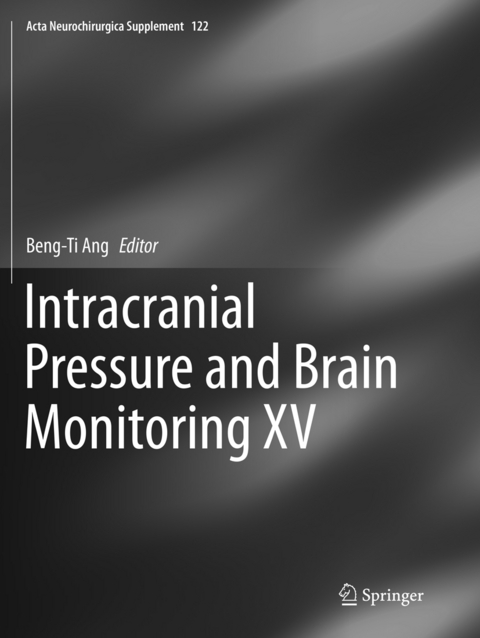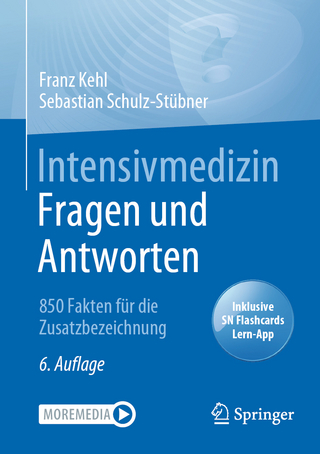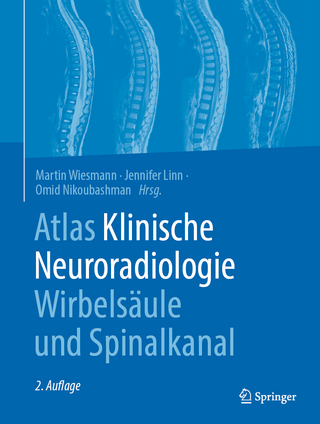
Intracranial Pressure and Brain Monitoring XV
Springer International Publishing (Verlag)
978-3-319-79409-9 (ISBN)
Christopher Beng-Ti Ang is a Senior Consultant in the Department of Neurosurgery at Singapore General Hospital, National Neuroscience Institute, Singapore and Senior Principal Investigator at the Singapore Institute for Clinical Sciences, Agency for Science, Technology, and Research, Singapore. Dr. Ang is an Associate Professor at Duke-National University of Singapore Graduate Medical School and Yong Loo Lin School of Medicine, National University of Singapore. He is also Chairman of the Chapter of Neurosurgeons, Academy of Medicine, Singapore. Dr. Ang is a Fellow of the Royal College of Surgeons of Edinburgh (General Surgery), the Royal College of Physicians and Surgeons of Glasgow (General Surgery), the Royal College of Surgeons of Edinburgh (Neurosurgery), and the Academy of Medicine, Singapore (Neurosurgery). He has been the recipient of a variety of awards and honors and is the author of numerous original articles in peer-reviewed journals.
PART 1 Acute Brain Pathologies - Treatment and Outcome.- Mechanism of Traumatic Brain injury at distant locations after exposure to blast waves: Preliminary results from animal and phantom experiments.- Early Changes in Brain Oxygen Tension May Predict Outcome Following Severe Traumatic Brain Injury.- Attitudes in 2013 to Monitoring Intracranial Pressure Monitoring for Traumatic Intracerebral Haemorrhage.- Topical therapy following an acute experimental head injury with mesenchymal stem cells (MSCs) has benefits in motor-behavioural tests for rodents.- Drag Reducing Polymer Enhances Microvascular Perfusion in the Traumatized Brain with Intracranial Hypertension.- PART 2 Clinical Monitoring of Intracranial Pressure.- Continuous Monitoring of the Complexity of Intracranial Pressure after Head Injury.- Characterization of Supra and Infra-Tentorial ICP Profiles.- Multi-resolution convolution methodology for ICP waveform morphology analysis.- Evaluation of Intracranial Pressure in Different Body Postures and Disease Entities.- Identification of clinically relevant groups of patients through the application of cluster analysis to a complex traumatic brain injury data set.- CSF lumbar drainage: a safe surgical option in refractory intracranial hypertension associated with acute post-traumatic external hydrocephalus.- Intracranial Pressure Waveforms are More Closely Related to Central Aortic than Radial Pressure Waveforms: Implications to Pathophysiology and Therapy.- Noninvasive Intracranial Pressure Determination in Patients with Subarachnoid Hemorrhage.- Non-Invasive Assessment of ICP - Evaluation on new TBI Data Material.- Real-Time Processing of Continuous Physiological Signals in a Neurocritical Care Unit on a Stream Data Analytics Platform.- The correlation between intracranial pressure and cerebral blood flow velocity during ICP plateau waves.- Outcome Prediction for Traumatic Brain Injury Patients with Dynamic Features from Intracranial Pressure andArterial Blood Pressure Signals: A Gaussian Process Approach.- Validation of a new noninvasive intracranial pressure monitoring method by direct comparison with an invasive technique.- Validation of a new minimally invasive intracranial pressure monitoring method by direct comparison with an invasive technique.- Monitoring of Intracranial Pressure in Meningitis PART3 Special Topics in Intracranial Pressure Science.- Bernoulli's Principle Applied To Brain's Fluids: Intracranial Pressure Does Not Drive Cerebral Perfusion Or CSF Flow.- 'Solid red line'-an observational study on death from refractory intracranial hypertension.- Patient-Specific Thresholds and Doses of Intracranial Hypertension in Severe Traumatic Brain Injury.- Characterization of ICP behavior in an experimental model of hemorrhagic stroke in rats.- Intrahospital transfer of patients with traumatic brain injury: increase of intracranial pressure.- Early cognitive domain deficits in patients with aneurysmal subarachnoid hemorrhage are correlated with functional status.- Brain Oxygen Relationship to Cerebral Perfusion Pressure Depends on Tip Location and Time Window: Can Brain O2 be an adjunctive modality for determining optimal CPP?.- The interaction between heart systole and cerebral circulation during lower body negative pressure test.- Plateau Waves of Intracranial Pressure and Multimodal Brain Monitoring.- The diastolic closing margin is associated with intraventricular hemorrhage in premature infants.- The ontogeny of cerebrovascular pressure autoregulation in premature infants.- Finite Element Model for Hydrocephalus and Idiopathic Intracranial Hypertension.- External ventricular catheter placement: How to improve.- PART4 Autoregulation and Experimental Studies in Brain Injury.- Change in Pulsatile Cerebral Arterial Pressure and Flow Waves as a Therapeutic Strategy?- Increasing intracranial pressure after head injury: Impact on respiratory oscillations in cerebral blood flow velocity.-Plateau Waves of Intracranial Pressure and Partial Pressure of Cerebral Oxygen.- Is impaired autoregulation associated with mortality in patients with severe cerebral diseases?.- Continuous optimal CPP based on minute-by-minute monitoring data: a study on a pediatric population.- Effects of brain temperature on cerebrovascular autoregulation during the acute stage of severe traumatic brain injury.- Monitoring cerebral autoregulation after subarachnoid hemorrhage.- Correlation between cerebral autoregulation and carbon dioxide reactivity on patients with traumatic brain injury.- Cerebral arterial time constant recorded from MCA and PICA in normal subjects.- Cerebral Critical Closing Pressure during Infusion Tests.- Outcome, Pressure Reactivity and Optimal Cerebral Perfusion Pressure Calculation in Traumatic Brain Injury: A Comparison of two Variants.- Identification of an Intracranial Pressure Response Function from Continuously Acquired Electroencephalographic and Intracranial Pressure Signals in Burst-Suppressed Patients.- The upper limit of cerebral blood flow autoregulation is decreased with elevations in intracranial pressure.- Derangement of cerebral blood flow autoregulation during intracranial pressure plateau waves as detected by time and frequency based methods.- State of Cerebrovascular Autoregulation Correlates To Outcome In Severe Infant/Pediatric Traumatic Brain Injury.- Can optimal cerebral perfusion pressure in severe traumatic brain injury patients be calculated based on minute-by-minute monitoring data?.- The ontogeny of cerebrovascular critical closing pressure.- Dynamic Cerebrovascular and Intracranial Pressure Reactivity Assessment of Impaired Cerebrovascular Autoregulation in Intracranial Hypertension.- PART 5 Biophysics and Experimental Aspects of Intracranial Pressure.- Automatic Calculation of Hydrostatic Pressure Gradient in Head Injured Patients: A Pilot Study.- The prediction of shunt response in idiopathic normal pressure hydrocephalusbased on intracranial pressure monitoring and lumbar infusion.- Intracranial hypertension is painless!.- The effect of body position on intraocular and intracranial pressures in rabbits.- Monoamine neurotransmitter metabolites concentration as a marker of cerebrospinal fluid volume changes.- Disproportionately enlarged subarachnoid-space hydrocephalus in idiopathic normal pressure hydrocephalus and its implication in pathogenesis.- Characterization of Cerebral Vascular Response to EEG Bursts Using ICP Pulse Waveform Template Matching.- Tranc-ependimal movement of cerebro-spinal fluid in neurologic and psychiatric pathologies.- Artifact in physiological data collected from brain injured patients: quantifying the problem and providing a solution through a factorial switching linear dynamical systems approach.- Central Pulsatile Pressure and Flow Relationship in Time and Frequency Domain to Characterise Hydraulic Input to the Brain and Cerebral Vascular Impedance.- Reproduction of ICP Waveform Changes in a Mathematical Model of the Cerebrospinal Circulatory System.- Accuracy, precision, sensitivity and specificity of non-invasive ICP absolute value measurements.- Measurement of intraspinal pressure after spinal cord injury: technical note from the Injured Spinal Cord Pressure Evaluation Study.- Characterization of the Intracranial Pressure Behavior in Chronic Epileptic Animals: a Preliminary Study.- Waveform Analysis of Intra Spinal Pressure after Traumatic Spinal Cord Injury- an Observational Study (O-64).- Relative Position of the Third Characteristic Peak of the Intracranial Pressure Pulse Waveform Morphology Differentiates Normal Pressure Hydrocephalus Shunt Responders and Non-Responders.- Who needs a revision? 20 years of Cambridge Shunt Lab (O-69).- Shunt testing in-vivo: problems with ventricular catheter- observational study. (O-70).- NPH Case Report: A Documented Self Story over Eight Years with my Observations.
| Erscheinungsdatum | 05.03.2022 |
|---|---|
| Reihe/Serie | Acta Neurochirurgica Supplement |
| Zusatzinfo | XIII, 377 p. 148 illus., 44 illus. in color. |
| Verlagsort | Cham |
| Sprache | englisch |
| Maße | 210 x 279 mm |
| Gewicht | 10653 g |
| Themenwelt | Medizin / Pharmazie ► Medizinische Fachgebiete ► Anästhesie |
| Medizinische Fachgebiete ► Chirurgie ► Neurochirurgie | |
| Medizin / Pharmazie ► Medizinische Fachgebiete ► Intensivmedizin | |
| Schlagworte | Biophysics • Brain Compliance • Head Injury • Hydrocephalus • Intracranial Hypertension • Neurotrauma |
| ISBN-10 | 3-319-79409-4 / 3319794094 |
| ISBN-13 | 978-3-319-79409-9 / 9783319794099 |
| Zustand | Neuware |
| Informationen gemäß Produktsicherheitsverordnung (GPSR) | |
| Haben Sie eine Frage zum Produkt? |
aus dem Bereich


